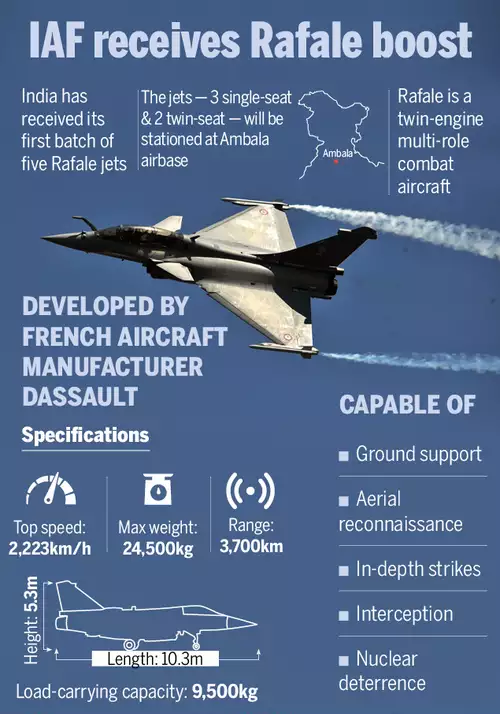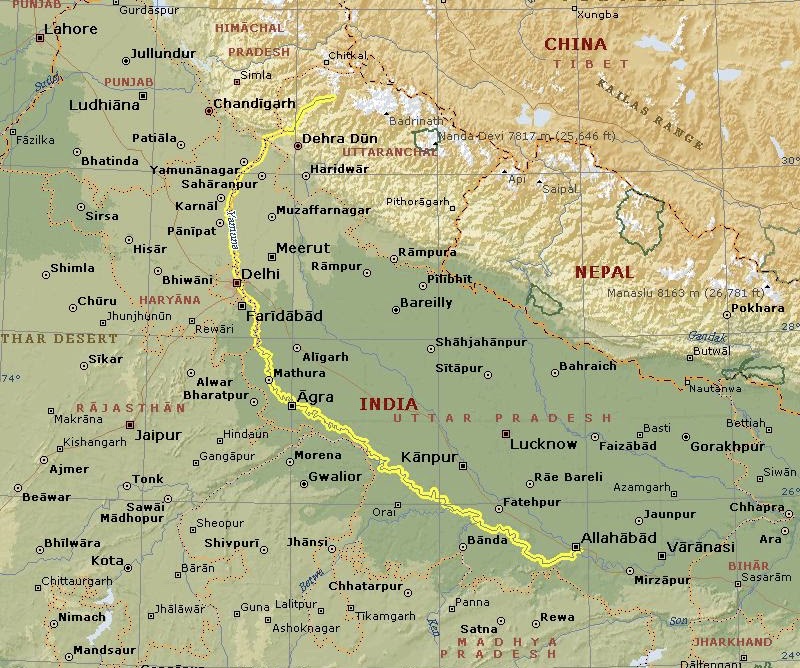Governance
National Education Policy, 2020
Why in News
Recently, the Union Cabinet has approved the new National Education Policy (NEP), 2020 with an aim to introduce several changes in the Indian education system - from the school to college level.
- The NEP 2020 aims at making “India a global knowledge superpower”.
- The Cabinet has also approved the renaming of the Ministry of Human Resource Development to the Ministry of Education.
- The NEP cleared by the Cabinet is only the third major revamp of the framework of education in India since independence.
- The two earlier education policies were brought in 1968 and 1986.
Key Points
- School Education:
- Universalization of education from preschool to secondary level with 100% Gross Enrolment Ratio (GER) in school education by 2030.
- To bring 2 crore out of school children back into the mainstream through an open schooling system.
- The current 10+2 system to be replaced by a new 5+3+3+4 curricular structure corresponding to ages 3-8, 8-11, 11-14, and 14-18 years respectively.
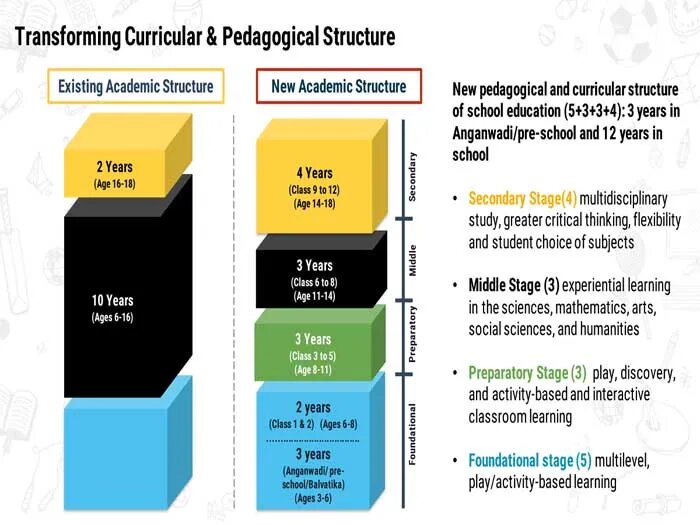
- It will bring the uncovered age group of 3-6 years under school curriculum, which has been recognized globally as the crucial stage for development of mental faculties of a child.
- It will also have 12 years of schooling with three years of Anganwadi/ pre schooling.
- Class 10 and 12 board examinations to be made easier, to test core competencies rather than memorised facts, with all students allowed to take the exam twice.
- School governance is set to change, with a new accreditation framework and an independent authority to regulate both public and private schools.
- Emphasis on Foundational Literacy and Numeracy, no rigid separation between academic streams, extracurricular, vocational streams in schools.
- Vocational Education to start from Class 6 with Internships.
- Teaching up to at least Grade 5 to be in mother tongue/regional language. No language will be imposed on any student.
- Assessment reforms with 360 degree Holistic Progress Card, tracking Student Progress for achieving Learning Outcomes
- A new and comprehensive National Curriculum Framework for Teacher Education (NCFTE) 2021, will be formulated by the National Council for Teacher Education (NCTE) in consultation with National Council of Educational Research and Training (NCERT).
- By 2030, the minimum degree qualification for teaching will be a 4-year integrated B.Ed. degree.
- Higher Education:
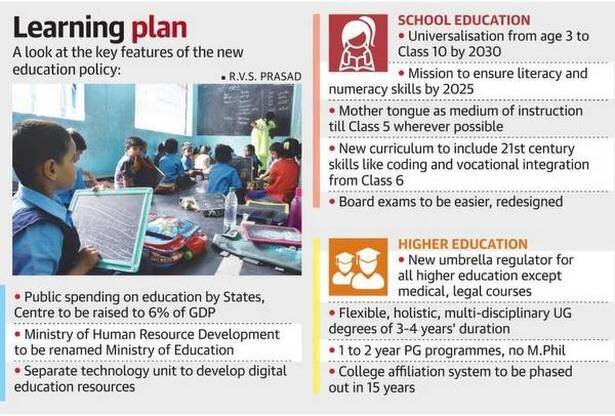
- Gross Enrolment Ratio in higher education to be raised to 50% by 2035. Also, 3.5 crore seats to be added in higher education.
- The current Gross Enrolment Ratio (GER) in higher education is 26.3%.
- Holistic Undergraduate education with a flexible curriculum can be of 3 or 4 years with multiple exit options and appropriate certification within this period.
- M.Phil courses will be discontinued and all the courses at undergraduate, postgraduate and PhD level will now be interdisciplinary.
- Academic Bank of Credits to be established to facilitate Transfer of Credits.
- Multidisciplinary Education and Research Universities (MERUs), at par with IITs, IIMs, to be set up as models of best multidisciplinary education of global standards in the country.
- The National Research Foundation will be created as an apex body for fostering a strong research culture and building research capacity across higher education.
- Higher Education Commission of India (HECI) will be set up as a single umbrella body for the entire higher education, excluding medical and legal education. Public and private higher education institutions will be governed by the same set of norms for regulation, accreditation and academic standards. Also, HECI will be having four independent verticals namely,
- National Higher Education Regulatory Council (NHERC) for regulation,
- General Education Council (GEC) for standard setting,
- Higher Education Grants Council (HEGC) for funding,
- National Accreditation Council (NAC) for accreditation.
- Affiliation of colleges is to be phased out in 15 years and a stage-wise mechanism to be established for granting graded autonomy to colleges.
- Over a period of time, every college is expected to develop into either an autonomous degree-granting College, or a constituent college of a university.
- Gross Enrolment Ratio in higher education to be raised to 50% by 2035. Also, 3.5 crore seats to be added in higher education.
- Other Changes:
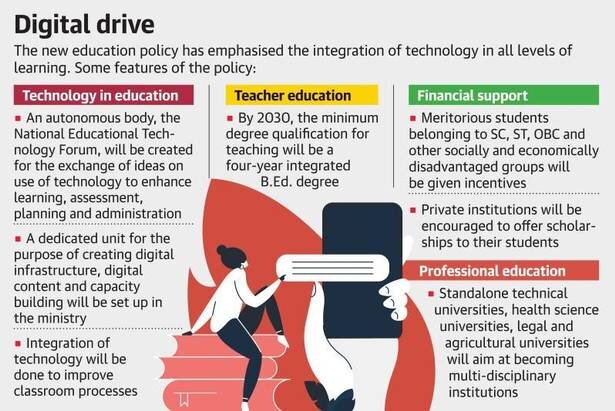
- An autonomous body, the National Educational Technology Forum (NETF), will be created to provide a platform for the free exchange of ideas on the use of technology to enhance learning, assessment, planning, administration.
- National Assessment Centre- 'PARAKH' has been created to assess the students.
- It also paves the way for foreign universities to set up campuses in India.
- It emphasizes setting up of Gender Inclusion Fund, Special Education Zones for disadvantaged regions and groups.
- National Institute for Pali, Persian and Prakrit, Indian Institute of Translation and Interpretation to be set up.
- It also aims to increase the public investment in the Education sector to reach 6% of GDP at the earliest.
- Currently, India spends around 4.6 % of its total GDP on education.
Education In India
- Constitutional Provisions:
- Part IV of Indian Constitution, Article 45 and Article 39 (f) of Directive Principles of State Policy (DPSP), has a provision for state-funded as well as equitable and accessible education.
- The 42nd Amendment to the Constitution in 1976 moved education from the State to the Concurrent List.
- The education policies by the Central government provides a broad direction and state governments are expected to follow it. But it is not mandatory, for instance Tamil Nadu does not follow the three-language formula prescribed by the first education policy in 1968.
- The 86th Amendment in 2002 made education an enforceable right under Article 21-A.
- Related Laws:
- Right To Education (RTE) Act, 2009 aims to provide primary education to all children aged 6 to 14 years and enforces education as a Fundamental Right.
- It also mandates 25% reservation for disadvantaged sections of the society where disadvantaged groups
- Right To Education (RTE) Act, 2009 aims to provide primary education to all children aged 6 to 14 years and enforces education as a Fundamental Right.
- Government Initiatives:
- Sarva Shiksha Abhiyan, Mid Day Meal Scheme, Navodaya Vidyalayas (NVS schools), Kendriya Vidyalayas (KV schools) and use of IT in education are a result of the NEP of 1986.
Way Forward
- A New Education Policy aims to facilitate an inclusive, participatory and holistic approach, which takes into consideration field experiences, empirical research, stakeholder feedback, as well as lessons learned from best practices.
- It is a progressive shift towards a more scientific approach to education. The prescribed structure will help to cater the ability of the child – stages of cognitive development as well as social and physical awareness. If implemented in its true vision, the new structure can bring India at par with the leading countries of the world.
Internal Security
Induction of French Rafale Aircrafts in IAF
Why in News
Recently, Indian Air Force (IAF) has received its first batch (5 out of 36) of French Rafale aviation combat aircraft at Ambala Air base (Haryana).
- The Rafales are India's first major acquisition of fighter planes in 23 years after the Sukhoi jets were imported from Russia.
- All the 36 jets will be delivered to India by the end of 2021.
- Introduced in 2001, the Rafale is a French twin-engine and multirole fighter aircraft designed and built by Dassault Aviation being produced for both the French Air Force and for carrier-based operations in the French Navy.
- India has inked a Rs 59,000-crore deal in 2016 to procure 36 Rafale jets from French aerospace major Dassault Aviation after a nearly seven-year exercise to procure 126 Medium Multi-Role Combat Aircraft (MMRCA) for the Indian Air Force did not fructify.
- The MMRCA deal was stalled due to disagreements over production in India.
- In comparison to the earlier deal i.e. MMRCA, Rafale has much technological advancement, lower life cycle cost and specifications according to the warfare needs of India.
Specification
- Air Supremacy: Equipped with a wide range of weapons, the Rafale is intended to perform air supremacy, interdiction (act of disrupting), aerial reconnaissance (observation to locate an enemy), ground support, in-depth strike, anti-ship strike and nuclear deterrence missions.
- Wide Range of Weapons: Meteor missile, Scalp cruise missile and MICA weapons system will be the mainstay of the weapons package of the Rafale jets.
- Meteor: It is the next generation of Beyond Visual Range (BVR) air-to-air missile (BVRAAM) designed to revolutionise air-to-air combat.
- The Meteor missile can target enemy aircraft from 150 km away. It can destroy enemy aircraft before they actually even get close to the Indian aircraft.
- SCALP Cruise Missiles: It can hit targets 300 km away.
- MICA Missile System: It is a very versatile air-to-air missile. It comes with a radar seeker and can be fired for the short-range to long-range as well right up to 100 km.
- It's already in service with the IAF i.e. Mirages and is the primary weapon system of Rafales as well.
- Meteor: It is the next generation of Beyond Visual Range (BVR) air-to-air missile (BVRAAM) designed to revolutionise air-to-air combat.
- Air to Air Target: The ability to strike air-to-air targets from up to 150 km away and safely hit land targets 300 km within enemy territory make them some of the deadliest fighter jets flying in the world.
- Flight Hours: The aircraft has 30,000 flight hours in operations.
Key Points
- Significance For India:
- Joint Strategic Vision: The Rafale would be an aid to the Joint Strategic Vision of India-France Cooperation in the Indian Ocean Region to curb over-flights and the threat of weapons of mass destruction in the area.
- Upgradation of Air Combat Capabilities: It will significantly bolster India's air combat capabilities especially when it is facing hostile neighbours like Pakistan and China.
- Unmatched Capabilities: The aircraft proved its unmatched capabilities in air combat missions in Afghanistan, Libya, Mali, Iraq and Syria in the last few years.
- India is the fourth country to have the strategic platform with Rafale after France, Egypt and Qatar.
- The Indian Air Force is also in the process of procuring a new generation medium-range modular air-to-ground weapon system Hammer to integrate with the Rafale jets. The Hammer (Highly Agile Modular Munition Extended Range) is a precision-guided missile developed by French defence major Safran.
- Game Changer: Rafales could be a game-changer for India after all the 36 jets join the Indian Air Force as no aircraft in possession of any country in the neighbourhood will be able to match their superior kinematic performance and powerful electronic warfare systems.
- The Rafale jet is often compared with the USA stealth F-35 aircraft and F-22.
- Border Clash with China: It is much more advanced and lethal than the current fighter aircraft available with China i.e.jet J-20. Therefore, it is definitely a boost to India's defence preparedness especially at the times of border clash with China.
- Related Concerns: The induction of Rafale aircraft will be a game changer in many ways, however, it may not make up for the challenges faced by the Indian Air Force in near future:
- IAF’s Depleting Strength of Fighter Jets: The emergency acquisition was made primarily to check the depleting combat capability of the IAF as the number of its fighter squadrons had come down to a worrying 31 against the authorised strength of at least 42.
- At present, its fleet comprises 30 squadrons of fighter jets.
- Therefore, one of main focus areas is to build up the authorised strength of fighter squadrons at the earliest.
- Increasing Potential of Hostile Neighbours: By 2023 the Pakistan Air Force will have 27 fighter squadrons while China’s PLA Air Force is assessed to have the capacity to bear at least 42 squadrons against India.
- Hence, India can not lose sight of the developments in the North and West, with both the adversaries i.e. China and Pakistan are continuously increasing and upgrading their inventories.
- Two Front Challenge: Even though the IAF desires a strength of 45 fighter squadrons for a two-front challenge ( War with China and Pakistan), the last time it had its authorised complement of 42 squadrons was in 2002 after the terror attack on Parliament.
- Since then, the numbers have steadily fallen, and the trend will continue with five squadrons of old Russian MiG aircraft getting decommissioned subsequently.
- Delay of Supplies: The IAF has planned to procure Light Combat Aircraft (LCA) Mk I and MK II from Hindustan Aeronautics Limited (HAL). However, the supplies from HAL are behind the scheduled induction plan.
- Similarly, IAF issued a request for information for 114 multirole fighters in June 2018 to foreign manufacturers i.e. Boeing, Lockheed Martin, Airbus Defence and Space, Russian Aircraft Corporation and Sukhoi Company. It plans to induct the aircraft within 12 years of the contract. However a request for proposal is awaited.
- Issues with Russia: The 12 Su-30MKIs, lost in accidents, are also being replenished by HAL through a contract with Russia, which has been approved by the government.
- However, the Russian connection is also limited as the IAF had earlier pulled out of the collaborative venture with Sukhoi to develop the Fifth Generation Fighter Aircraft (FGFA) after 11 years, citing disagreements over cost sharing plans, technology transfers and the test aircraft’s technological capabilities.
- IAF’s Depleting Strength of Fighter Jets: The emergency acquisition was made primarily to check the depleting combat capability of the IAF as the number of its fighter squadrons had come down to a worrying 31 against the authorised strength of at least 42.
Way Forward
- Assimilation of Rafale has the capability to boost the defence sector of India. For the same there is need for the constant dialogue mechanism between India and France to further enhance its strategic and military ties.
- Meanwhile, India must procure 21 MiG-29 aircraft from Russia which would be inducted into service as an additional squadron. Along with the same, IAF must strive towards replenishing the old fighter aircrafts.
- The fitting of additional India-specific enhancements in Rafale is a necessary aspect which must be done through exchange of technological intervention with France.
International Relations
AIIB and India
Why in News
Jin Liqun has been re-elected as the President of the China-based Asian Infrastructure Investment Bank (AIIB) for a second five-year term.
- The President stated that the bank would remain an “apolitical institution” and continue to back projects in India.
- The management will look at the proposed projects from the economic and financial point of view and not with a political view.
Key Points
- India and AIIB:
- India was among the AIIB’s 57 founding members in 2016.
- It is also its second-largest shareholder (with 7.62% voting shares) after China (26.06%).
- It has received USD 4.35 billion from the Bank.
- This is the highest of any country, with the bank so far approving loans of USD 19.6 billion to support 87 projects in 24 countries.
- Turkey is second with USD 1.95 billion.
- AIIB has approved financing projects in India in a host of sectors like energy, transport and water including the Bangalore metro rail project (USD 335 million), Gujarat rural roads project (USD 329 million) and Phase 3 of the Mumbai urban transport project (USD 500 million).
- In a recent virtual meeting, India said that it expects AIIB to introduce new financing instruments, provide financing for social infrastructure and to integrate development of climate resilient and sustainable energy access infrastructure into AIIB’s recovery response to the Covid-19 crisis.
- This implies that India is unlikely to alter its engagement with the China-led Asian Infrastructure Investment Bank (AIIB), despite a host of offensive measures announced recently to reduce its trade and investment links with China.
- Chinese Angle:
- In June 2020, AIIB approved USD 500 million for Covid-19 Emergency Response Fund and Health Systems Preparedness Project and another USD 750 million for Covid-19 Active Response and Expenditure Support, in a co-financing arrangement with the Asian Development Bank (ADB).
- USD 750 million loan was approved two days after the clash in Galwan Valley in Ladakh along the India-China border.
- It has supported several projects under the Belt and Road Initiative (BRI) framework, but is not formally linked to the plan.
- India has concerns over the China-Pakistan Economic Corridor - a part of the BRI.
- In June 2020, AIIB approved USD 500 million for Covid-19 Emergency Response Fund and Health Systems Preparedness Project and another USD 750 million for Covid-19 Active Response and Expenditure Support, in a co-financing arrangement with the Asian Development Bank (ADB).
Asian Infrastructure Investment Bank
- The AIIB is a multilateral development bank with a mission to improve social and economic outcomes in Asia.
- Headquartered in Beijing (China), it began operations in January 2016 and has now grown to 103 approved members worldwide.
Way Forward
- India should continue to engage with AIIB as it will be able to access resources for the financing of national and cross-border infrastructure projects from the Bank.
- AIIB is also significant as the World Bank is continued to be dominated by the USA while Japan has more influence over Asian Development Bank (ADB).
- Further, India needs to ensure that its own interests are served by its membership very explicitly. It should make sure that AIIB doesn’t end up becoming a tool of Chinese geopolitical agenda.
Governance
Protesting is a Fundamental Right: UN
Why in News
Recently, the United Nations (UN) Human Rights Committee has reaffirmed that protesting peacefully, online or in person, is a fundamental human right.
- This statement has come in the backdrop of increasing demonstrations over issues like political rights and racial justice.
Key Points
- UN Human Rights Committee: It is tasked with monitoring how countries implement the International Covenant on Civil and Political Rights (ICCPR) 1976, which under Article 21 guarantees the right to peaceful assembly.
- Latest Interpretation of the Right to Peaceful Assembly:
- Fundamental Human Right for People: To gather to celebrate or to air grievances in public and in private spaces, outdoors, indoors and online is a fundamental human right.
- Protesters: Everyone, including children, foreign nationals, women, migrant workers, asylum seekers and refugees, can exercise the right of peaceful assembly.
- Protection: Protesters have the right to wear masks or hoods to cover their face and that Governments should not collect personal data to harass or intimidate participants.
- Role of Journalists and Human Rights Observers: They have the right to monitor and document any assembly, including violent and unlawful ones.
- Government Obligations:
- Governments could not prohibit protests by making “generalised references to public order or public safety, or an unspecified risk of potential violence”.
- Governments cannot block internet networks or close down any website because of their roles in organising or soliciting a peaceful assembly.
- Significance: The Committee’s interpretation will be important guidance for judges in national and regional courts around the world, as it now forms part of what is known as ‘soft law’.
- The interpretation is a form of legal advice (not mandatory) from the Committee that monitors the International Covenant on Civil and Political Rights (ICCPR) 1976.
- Indian Scenario:
- India is a state party to the International Covenant on Civil and Political Rights (ICCPR).
- The right to protest, to publicly question and force the government to answer, is a fundamental political right of the people that flows directly from a democratic reading of Article 19 of the Constitution of India.
- Article 19 (1) (a) states that all citizens shall have the right to freedom of speech and expression.
- Article 19 (1) (b) states that all citizens shall have the right to assemble peaceably and without arms.
- However, the State can impose reasonable restrictions on the exercise of right of assembly on two grounds, namely, sovereignty and integrity of India and public order including the maintenance of traffic in the area concerned.
- Further, Indian courts have reiterated that the right to protest is a fundamental right (Ramlila Maidan Incident v. Home Secretary, Union Of India & Ors. case -2012).
International Covenant on Civil and Political Rights
- The ICCPR is a key international human rights treaty, providing a range of protections for civil and political rights.
- The ICCPR, together with the Universal Declaration of Human Rights and the International Covenant on Economic Social and Cultural Rights, are considered the International Bill of Human Rights.
- The Bill influences the decisions and actions of Government, State and Non-State actors to make economic, social and cultural rights a top-priority in the formation and implementation of national, regional and international policy and law.
- The ICCPR obligates countries that have ratified the treaty to protect and preserve basic human rights, such as: the right to life and human dignity; equality before the law; freedom of speech, assembly, and association; religious freedom and privacy; freedom from torture, ill-treatment, and arbitrary detention; gender equality; the right to a fair trial; right family life and family unity; and minority rights.
- The Covenant compels governments to take administrative, judicial, and legislative measures in order to protect the rights enshrined in the treaty and to provide an effective remedy.
- The Covenant was adopted by the UN General Assembly in 1966 and came into force in 1976. 173 countries including India have ratified the Covenant.
Governance
India Report on Digital Education, 2020
Why in News
Recently, the Ministry of Human Resource Development (MHRD) has launched India Report on Digital Education, 2020.
- Recently the MHRD has been renamed as the Ministry of Education.
Key Points
- The Report:
- It has been prepared by the digital education division of MHRD in consultation with education departments of the states and union territories.
- It elaborates the innovative methods adopted by the MHRD, for ensuring accessible and inclusive education to children at home and reducing learning gaps during the Covid-19 pandemic.
- MHRD Initiatives:
- It has initiated many projects to assist teachers, scholars and students in their pursuit of learning like DIKSHA platform, Swayam Prabha TV Channel, On Air - Shiksha Vani, e-PathShala and telecast through TV channels.
- It also released guidelines on digital education called 'PRAGYATA'.
- State Initiatives:
- States and Union Territories have provided digital education at the doorstep of the students. Some of them are:
- Social Media Interface for Learning Engagement (SMILE) in Rajasthan.
- Project Home Classes in Jammu.
- Padhai Tunhar Duvaar (Education at your doorstep) in Chhattisgarh.
- Unnayan Initiatives in Bihar.
- Mission Buniyaad in NCT of Delhi.
- Kerala’s own educational TV channel (KITE VICTERS).
- E-scholar portal as well as free online courses for teachers in Meghalaya.
- They used social media tools like WhatsApp Group, Online classes through YouTube channel and Google meet to connect to the students.
- Some of the states/UTs like Lakshadweep, Nagaland and Jammu & Kashmir have also distributed tablets, DVDs and pendrives, equipped with e-contents to students.
- They have also distributed textbooks at children’s doorsteps to ensure inclusive learning in remote areas where internet connectivity and electricity is poor.
- Several states have also focussed on the mental well-being of the children e.g Delhi conducted happiness classes.
- MHRD has also launched the 'Manodarpan' initiative, which aims to provide psychosocial support to students, family members and teachers for their mental health and well-being during the times of Covid-19.
- States and Union Territories have provided digital education at the doorstep of the students. Some of them are:
Way Forward
- The report will serve the purpose of cross-learning, adapting and adopting best practices across the country.
- While the education is moving towards blended learning through online and offline mode, it shall be the endeavour of all the stakeholders in the field of education to ensure that no student is left behind for want of affordability and accessibility of quality education.
Indian Heritage & Culture
Natesa: Pratihara Style of Rajasthan
Why in News
Natesa, a rare sandstone idol from the 9th century (Pratihara Style of Rajasthan) has been retrieved after 22 years by Rajasthan police.
Key Points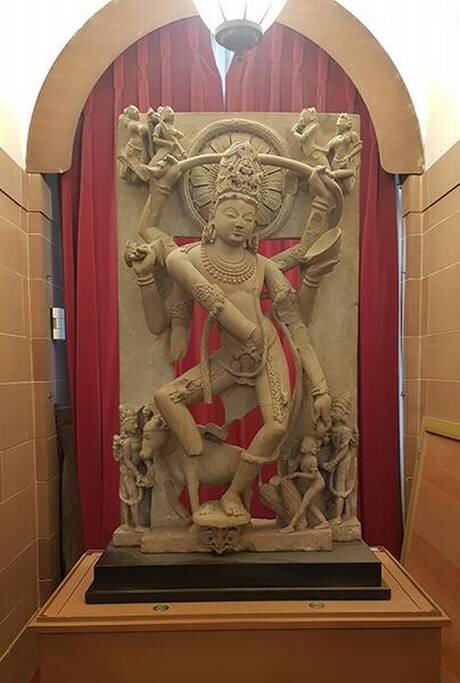
- Description: The Natesa icon, currently at the Indian High Commission, London, was originally from the Ghateswar Temple, Baroli, Rajasthan.
- It was smuggled out of the country in 1998.
- A few archaeologists behind the ‘India Pride Project’ have also taken consistent efforts for the restitution of the Natesa icon.
- India Pride Project: It is a group of art enthusiasts who use social media to identify stolen religious artefacts from Indian temples and secure their return.
- Features: The sandstone Natesa figure stands tall at almost 4 ft. in a rare and brilliant depiction of Shiva.
- A beautiful depiction of Nandi is shown behind the right leg of the Natesa icon.
- Significance: The Archaeological Survey of India (ASI) and the Ministry of Culture should use this restitution as a much-needed impetus to go after thousands of artefacts stolen since the 1960s.
Pratihara Style
- It is a famous temple architecture belonging to the Gurjara-Pratihara dynasty of Rajasthan.
- They ruled much of Northern India from the mid-8th to the 11th century.
- Significant Rulers: Nagabhata Il, Mhir Bhoj, Mahenedra pal I
- Style: The architecture is known for their sculptures, carved panels and open pavilion style temples belonging to Nagara Style of temple Architecture.
- They used most common sandstones for idols that have various shades of red, caused by iron oxide (rust).
- The greatest development of their style of building is at Khajuraho, Madhya Pradesh, now a UNESCO World Heritage Site.
Biodiversity & Environment
High Level of Ammonia in Yamuna
Why in News
Recently, high levels (around 3 parts per million) of ammonia in the Yamuna river has been detected in Delhi which led to the disruption of water supply in Delhi.
- As per the Bureau of Indian Standards (BIS), the acceptable maximum limit of ammonia in drinking water is 0.5 parts per million (ppm)
Key Points
- Ammonia:
- Its chemical formula is NH3.
- It is a colourless gas and is used as an industrial chemical in the production of fertilisers, plastics, synthetic fibres, dyes and other products.
- It occurs naturally in the environment from the breakdown of organic waste matter, and may also find its way to ground and surface water sources through industrial effluents, contamination by sewage or through agricultural runoff.
- Effect of High Level of Ammonia:
- Ammonia reduces the amount of oxygen in water as it is transformed to oxidised forms of nitrogen. Hence, it also increases Biochemical oxygen demand (BOD).
- If the concentration of ammonia in water is above 1 ppm it is toxic to fishes.
- In humans, long term ingestion of water having ammonia levels of 1 ppm or above may cause damage to internal organs.
- Treatment:
- Mixing of freshwater with ammonia polluted water.
- Chlorination.
- Chlorination is the process of adding chlorine or chlorine compounds such as sodium hypochlorite to water.
- This method is used to kill certain bacteria and other microbes in tap water. However, chlorine is highly toxic.
- Long Term Solution:
- Stringent implementation of guidelines against dumping harmful waste into the river.
- Making sure untreated sewage does not enter the water.
- Maintain a sustainable minimum flow, called the ecological flow.
- Ecological flow is the minimum amount of water that should flow throughout the river at all times to sustain underwater and estuarine ecosystems and human livelihoods, and for self regulation.
Yamuna
- The river Yamuna, a major tributary of river Ganges, originates from the Yamunotri glacier near Bandarpoonch peaks in the Mussoorie range of the lower Himalayas in Uttarkashi district of Uttarakhand.
- It meets the Ganges at the Sangam in Prayagraj, Uttar Pradesh after flowing through Uttarakhand, Himachal Pradesh, Haryana and Delhi.
- Length: 1376 km
- Important Dam: Lakhwar-Vyasi Dam (Uttarakhand), Tajewala Barrage Dam (Haryana) etc.
- Important Tributaries: Chambal, Sindh, Betwa and Ken.
Governance
Antibiotic Use in Dairy Sector
Why in News
Recently, the Centre for Science and Environment (CSE) held an online meeting on antibiotic use in the dairy sector.
- The meeting was attended by experts from the Food Safety and Standards Authority of India (FSSAI), the National Dairy Development Board (NDDB), the World Health Organization (WHO), the Department of Animal Husbandry and Dairying (under the Ministry of Fisheries, Animal Husbandry and Dairying), the Central Drugs Standard Control Organisation, (CDSCO) etc.
- The meeting highlighted that the milk sold directly to consumers and the processed milk sold in packets are not tested and stay largely unchecked for antibiotic residues.
Key Points
- India is the world's largest milk producer, and it also forms an integral part of Indian diets, especially of children’s.
- It produced 188 million tonnes (MT) of milk in 2018-19.
- Urban areas consume 52% of it and the unorganised sector, comprising milkmen and contractors, caters to 60% of this consumer base.
- The remaining demand is met by dairy cooperatives and private dairies which represent the organised sector.
- Concerns:
- Inadequate Focus on Testing: There is an inadequate focus on testing for antibiotic residues in the milk collected by State federations, which process it and sell it as packaged milk.
- Extensive Misuse: Antibiotics are extensively misused in the dairy sector. Such chemical-intensive food leads to antibiotic resistance.
- No Professional Help: Farmers often inject animals on their own judgment of signs and symptoms of a disease without any veterinary supervision.
- Indiscriminate Usage: Dairy farmers indiscriminately use antibiotics for diseases such as mastitis (infection/inflammation of the udder) which is a common ailment in dairy animals.
- The antibodies used by them often include Critically Important Antibiotics (CIAs) for humans.
- The WHO has warned that the CIAs should be preserved in view of the growing crisis of antibiotic resistance.
- Farmers often sell milk while the animal is under treatment, which increases the chances of antibiotic residues.
- Easy Availability: The antibiotics are easily available without the prescription of a registered veterinarian and stocked at farms.
Biodiversity & Environment
Aerial Seeding in Haryana
Why in News
Recently, the Haryana government has employed aerial seeding techniques to improve green cover in the Aravalli area of the state.
- The project is being carried out on a pilot basis to regenerate the low vegetation density or denuded areas on inaccessible or difficult sites of Aravalli and Shivalik hills.
Aerial Seeding
- Description:
- Aerial Seeding is a plantation technique wherein seed balls — seeds covered with a mixture of clay, compost, char and other components — are sprayed using aerial devices, including planes, helicopters or drones.
- Working:
- Seeds balls/pellets are dispersed in a targeted area by low-flying drones, with the coating providing the required weight for seeds to airdrop on a predetermined location rather than getting deterred by the wind.
- These pellets sprout when there is enough rain, with nutrients present within them helping in initial growth.
- Advantages:
- Areas that are inaccessible, having steep slopes or no forest routes, can be targeted using this method.
- The process of the seed’s germination and growth is such that it requires no attention after it is dispersed and thus seed pellets are known as the “fire and forget” way of plantation.
- They eliminate any need for ploughing and do not need to be planted since they are already surrounded by soil, nutrients, and microorganisms. The clay shell also protects them from birds, ants and rats.
- Species to be Used for Aerial Seeding:
- The plant species which are native to the area and hardy, with seeds that are of an appropriate size for preparing seedballs are usually used for aerial seeding, with a higher survival percentage.
Key Points
- Use of Seeding Drone:
- The method involves spraying seed balls or seed pellets from the air using seeding drones.
- It is equipped with a precise delivery mechanism for seeds of different sizes from a height of 25 to 50 metres.
- A single drone can plant 20,000-30,000 seeds a day.
- Implementation:
- The method is being implemented on 100 acres of land to test efficacy of the seed dispersal mechanism and review the success rate.
- The species that will be planted through aerial seeding include Acacia senegal (Khairi), Ziziphus mauritiana (Beri), and Holarrhena spp (Inderjo), all of which have a higher chance of survival in these areas.
- Also, site specific grass seeds will also be added to the mix as they serve as good soil binders.
- Significance:
- It will provide work opportunities to the local community, especially women, who can prepare the seed balls.
- The method will be useful since there are many areas that are either difficult to reach or inaccessible altogether, making traditional methods of plantation difficult.
Social Justice
Higher Food Prices and Nutrition Security
Why in News
Recently, the Tata-Cornell Institute for Agriculture and Nutrition in New York has conducted a study titled “Pandemic Prices: Covid-19 Price Shocks and their Implications for Nutrition Security in India”.
- It analysed prices of cereals (wheat and rice) and non-cereals (onion, tomatoes, potatoes, five pulses and eggs) in 11 tier-1 and tier-2 cities from 1st March-31st May 2020 compared to the same period in 2019.
Key Points
- Following the lockdown, all food groups witnessed a rise in prices, but the rise in prices was higher for non-cereals compared to cereals.
- After the lockdown was lifted, prices of cereals and non-cereals stabilised quickly while those of protein-rich pulses continued to remain high.
- Data Analysis:
- Wheat and Rice: Retail prices were either stable or cheaper than weeks preceding the lockdown and last year.
- Potato, Onions and Tomatoes: The prices went high initially but later on stabilised. Onion prices went as high as 200-250%.
- Eggs: The prices fell initially (because of fear of coronavirus through poultry) but increased by March-end and then stabilised two months later.
- Pulses: The prices rose during the lockdown and continued to remain higher than the pre-Covid-19 levels.
- Concerns:
- The relative stability in cereal prices and enhanced prices of pulses will most likely distort spending and consumption decisions resulting in a staple-based, protein-deficient diet hampering the food security in the country.
- The relatively higher prices of more nutritious food make it difficult for the poor and marginal population to access such nutrient-rich food.
- As a result, the proportion of such foods in the diets goes further down and is replaced by less nutritious and calorie-dense foods.
- It will worsen the nutritional status of women and children across India, and more so in the impoverished regions of the country.
- The study also criticised the amendment to the Essential Commodities Act, 1955 which deregulated cereals, edible oils, oilseeds, pulses, onions and potatoes.
- Suggestions:
- The government can ensure the provision of supplementary protein by timely interventions to stabilise the increase in prices.
- Policies that insulate non-staple supply chains from price shocks and fluctuations are necessary.
- Abolishing outdated restrictions to address farm sector bottlenecks is very important.
Way Forward
- Food and nutrition security is ensured if all of the citizens of a nation have enough nutritious food available, all of them have the capacity to buy food of acceptable quality and there is no barrier on access to food.
- The right to nutritious food is a well-established principle of international human rights law. It has evolved to include an obligation for state parties to respect, protect and fulfil their citizens’ right to food and nutrition security.

